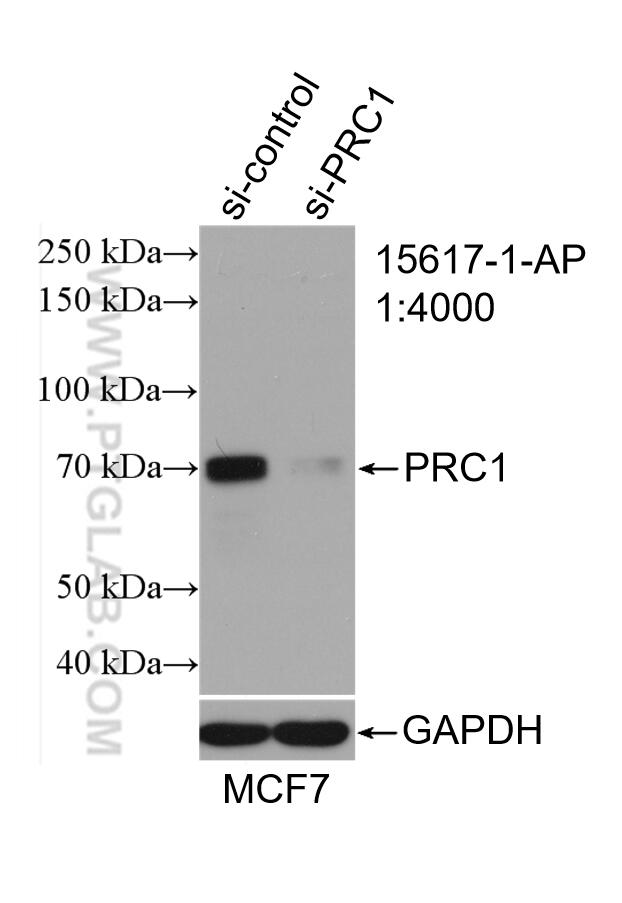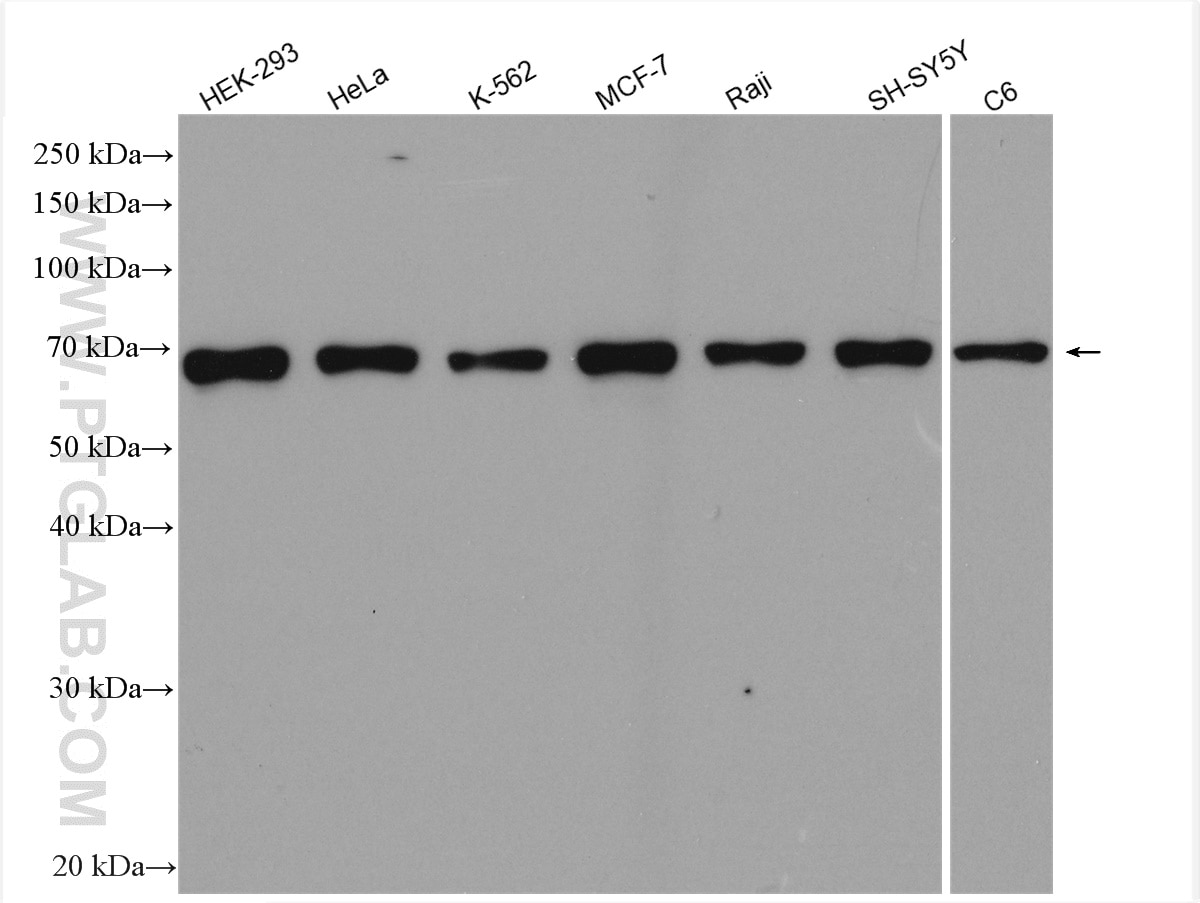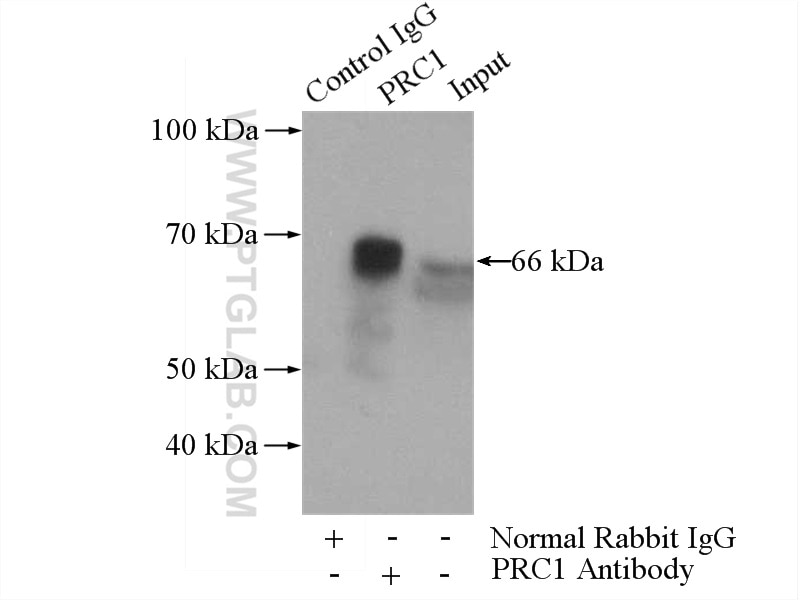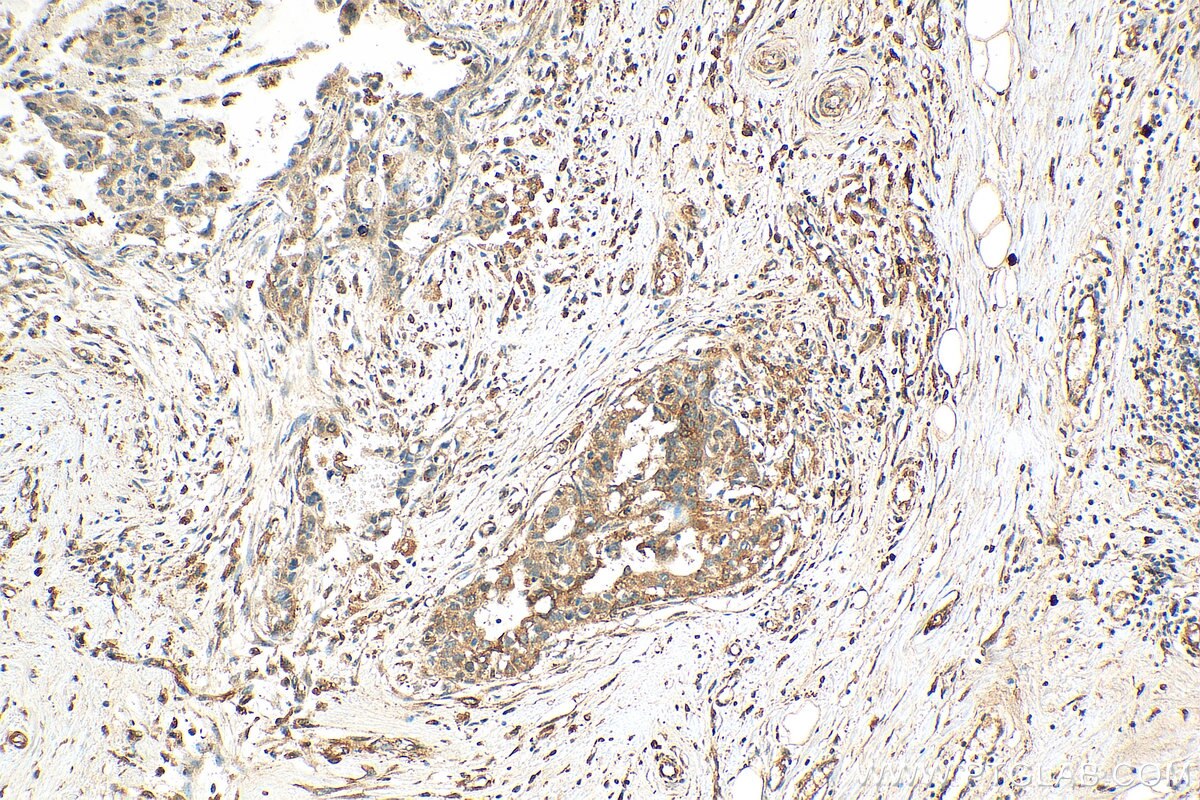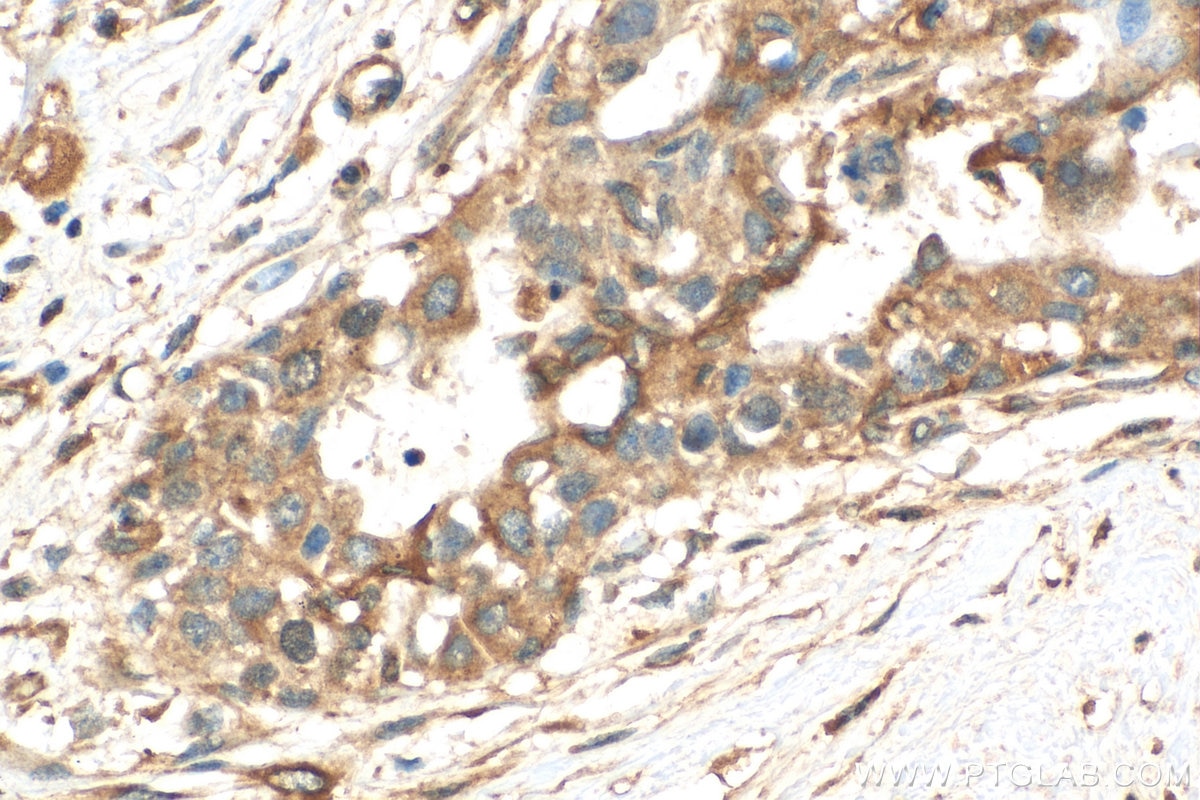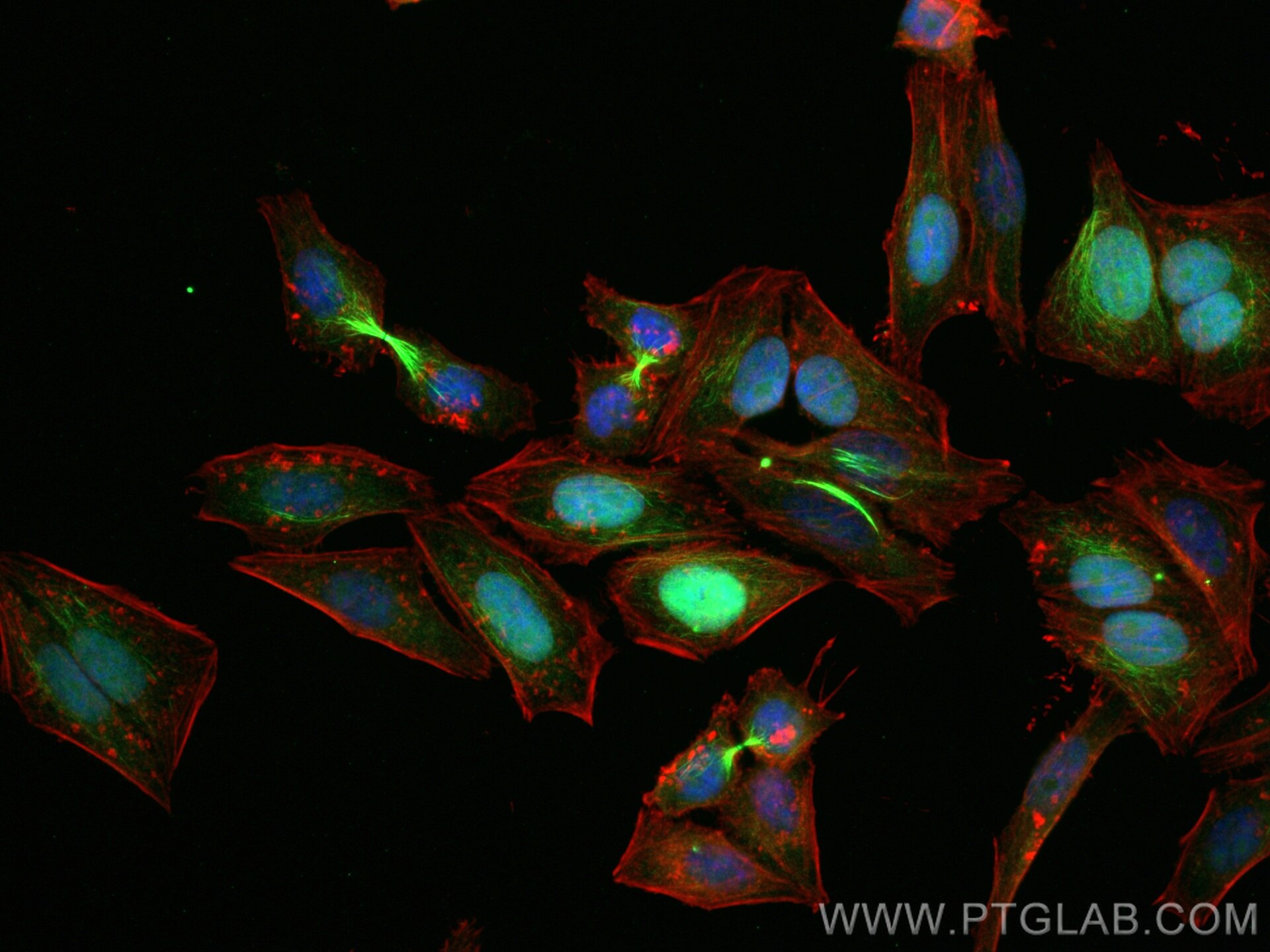- Featured Product
- KD/KO Validated
PRC1 Polyklonaler Antikörper
PRC1 Polyklonal Antikörper für IF, IHC, IP, WB, ELISA
Wirt / Isotyp
Kaninchen / IgG
Getestete Reaktivität
human, Ratte und mehr (1)
Anwendung
WB, IP, IHC, IF, ELISA
Konjugation
Unkonjugiert
Kat-Nr. : 15617-1-AP
Synonyme
Galerie der Validierungsdaten
Geprüfte Anwendungen
| Erfolgreiche Detektion in WB | MCF-7-Zellen, C6-Zellen, HEK-293-Zellen, HeLa-Zellen, K-562-Zellen, Raji-Zellen, SH-SY5Y-Zellen |
| Erfolgreiche IP | HEK-293-Zellen |
| Erfolgreiche Detektion in IHC | humanes Mammakarzinomgewebe Hinweis: Antigendemaskierung mit TE-Puffer pH 9,0 empfohlen. (*) Wahlweise kann die Antigendemaskierung auch mit Citratpuffer pH 6,0 erfolgen. |
| Erfolgreiche Detektion in IF | HepG2-Zellen |
Empfohlene Verdünnung
| Anwendung | Verdünnung |
|---|---|
| Western Blot (WB) | WB : 1:1000-1:8000 |
| Immunpräzipitation (IP) | IP : 0.5-4.0 ug for 1.0-3.0 mg of total protein lysate |
| Immunhistochemie (IHC) | IHC : 1:50-1:500 |
| Immunfluoreszenz (IF) | IF : 1:200-1:800 |
| It is recommended that this reagent should be titrated in each testing system to obtain optimal results. | |
| Sample-dependent, check data in validation data gallery | |
Veröffentlichte Anwendungen
| KD/KO | See 1 publications below |
| WB | See 10 publications below |
| IHC | See 4 publications below |
| IF | See 9 publications below |
Produktinformation
15617-1-AP bindet in WB, IP, IHC, IF, ELISA PRC1 und zeigt Reaktivität mit human, Ratten
| Getestete Reaktivität | human, Ratte |
| In Publikationen genannte Reaktivität | human, Maus |
| Wirt / Isotyp | Kaninchen / IgG |
| Klonalität | Polyklonal |
| Typ | Antikörper |
| Immunogen | PRC1 fusion protein Ag8028 |
| Vollständiger Name | protein regulator of cytokinesis 1 |
| Berechnetes Molekulargewicht | 72 kDa |
| Beobachtetes Molekulargewicht | 66 kDa |
| GenBank-Zugangsnummer | BC003138 |
| Gene symbol | PRC1 |
| Gene ID (NCBI) | 9055 |
| Konjugation | Unkonjugiert |
| Form | Liquid |
| Reinigungsmethode | Antigen-Affinitätsreinigung |
| Lagerungspuffer | PBS mit 0.02% Natriumazid und 50% Glycerin pH 7.3. |
| Lagerungsbedingungen | Bei -20°C lagern. Nach dem Versand ein Jahr lang stabil Aliquotieren ist bei -20oC Lagerung nicht notwendig. 20ul Größen enthalten 0,1% BSA. |
Hintergrundinformationen
PRC1 (protein regulator of cytokinesis 1) is a microtubule-bundling protein that is involved in cytokinesis. Depletion of PRC1 leads to failed cytokinesis. PRC1 is located in the nucleus during interphase, and becomes associated with mitotic spindles in a highly dynamic manner during mitosis, and localizes to the cell mid-body during cytokinesis. PRC1 is a substrate of CDK1 and it was assumed that CDK1 phosphorylation blocks its activity during metaphase. Three isoforms of PRC1 exist due to the alternative splicing, with predictive molecular weight of 71.6 kDa, 70.2 kDa and 66.2 kDa, respectively. The dual bands between 66-72 kDa detected by this antibody may represent different forms of PRC1.
Protokolle
| Produktspezifische Protokolle | |
|---|---|
| WB protocol for PRC1 antibody 15617-1-AP | Protokoll herunterladen |
| IHC protocol for PRC1 antibody 15617-1-AP | Protokoll herunterladen |
| IF protocol for PRC1 antibody 15617-1-AP | Protokoll herunterladen |
| IP protocol for PRC1 antibody 15617-1-AP | Protokoll herunterladen |
| Standard-Protokolle | |
|---|---|
| Klicken Sie hier, um unsere Standardprotokolle anzuzeigen |
Publikationen
| Species | Application | Title |
|---|---|---|
Nat Commun Therapeutic targeting of the PLK1-PRC1-axis triggers cell death in genomically silent childhood cancer. | ||
Dev Cell Distinct classes of lagging chromosome underpin age-related oocyte aneuploidy in mouse. | ||
Biomaterials Biocompatible PEGylated Gold nanorods function As cytokinesis inhibitors to suppress angiogenesis. | ||
PLoS Biol The ciliopathy protein CCDC66 controls mitotic progression and cytokinesis by promoting microtubule nucleation and organization. | ||
Development Aurora kinase B inhibits aurora kinase A to control maternal mRNA translation in mouse oocytes. | ||
Front Cell Dev Biol PRC1 and RACGAP1 are Diagnostic Biomarkers of Early HCC and PRC1 Drives Self-Renewal of Liver Cancer Stem Cells. |
